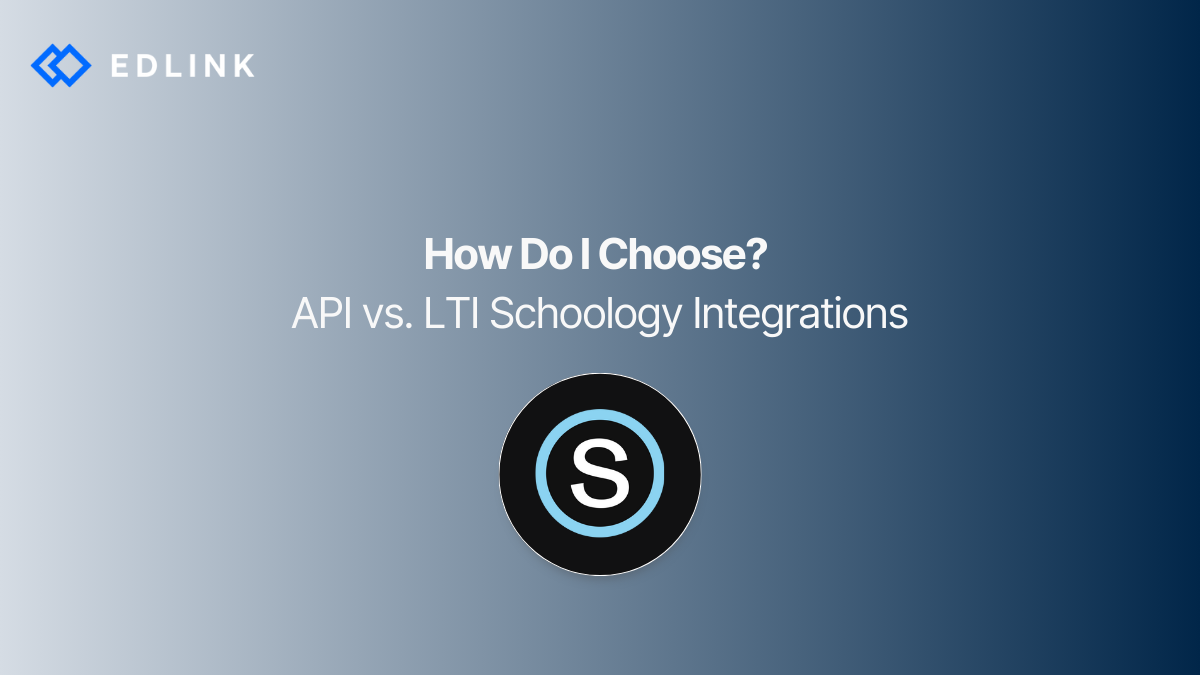Background on Schoology
Schoology is a fast-growing LMS for K12 districts in the United States. Several K12 districts and state educational agencies throughout the country adopted Schoology and are looking for edtech vendors (third-party apps) whose solutions provide interoperability with Schoology.
Schoology can provide 2 methods of integration: through an API integration or through an LTI® integration.
How LTI Integrations Work for Schoology
Several LMSs adopted LTI to become more interoperable. Applications that conform to the LTI standard can work with any platform that also conforms to the same standard’s version. So if an LMS supports LTI 1.3 and an app only supports LTI 1.1, the 2 cannot integrate.
Schoology does not support the most recent releases of the LTI spec: LTI v1.3 and LTI Advantage. Instead, Schoology only supports LTI 1.0 (also known as, LTI Launch) and LTI v1.1. LTI apps in Schoology can launch within Schoology and appear in an iframe in the LMS. Through an LTI integration, the user doesn’t need to leave Schoology.
How API Integration Work for Schoology
API integration allows apps to directly communicate with Schoology through the proprietary Schoology API. The first step to building this communication is authenticating users.
Users can authenticate into an external app using their Schoology credentials from an OAuth 1.0 workflow. Once an app and Schoology authenticate the user, then the app can act on behalf of the user. This user representation lets the app perform key integration features in Schoology programmatically via the Schoology API. Integration functions like grade passback and content creation become available and performed while the user is on the app, not in Schoology.
Should You Build an API or LTI Schoology Integration?
Ultimately, the integration developers should build depends on what the user needs. Some districts particularly need LTI integration with their Schoology environment. Other districts could look for a solution with API integration features like district-wide rostering and content creation. Having a solution for both situations can become valuable when expanding work to a multitude of districts.
So what’s our answer?
Have both types of integrations.
Read More on Schoology
Here are other articles we’ve written on Schoology to help you on your journey:
- The Challenges of Integrating with Schoology
- How to Implement Single Sign-On with Schoology
- Schoology and LTI 1.3: What You Need to Know
- 5 Do-It-Yourself Tips for Building a Successful LMS Integration for EdTech Developers
- Common Pitfalls of LMS Integration
Learn More about Edlink
If you're looking for a partner who can help guide you through developing LMS integrations (like these), then let’s introduce ourselves. We’re Edlink!

